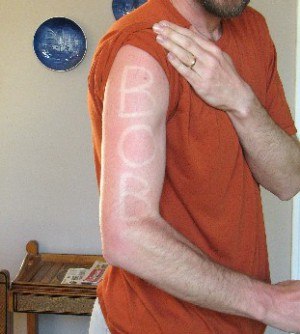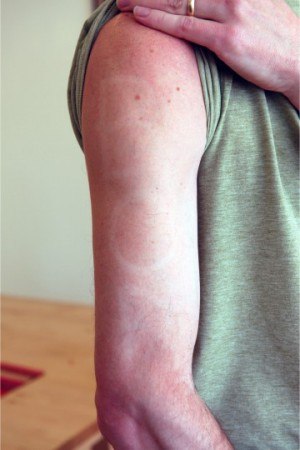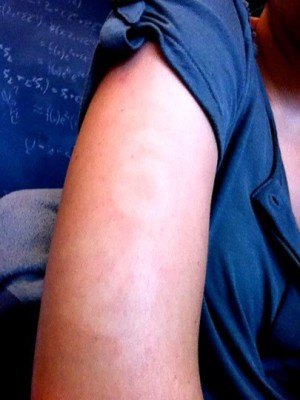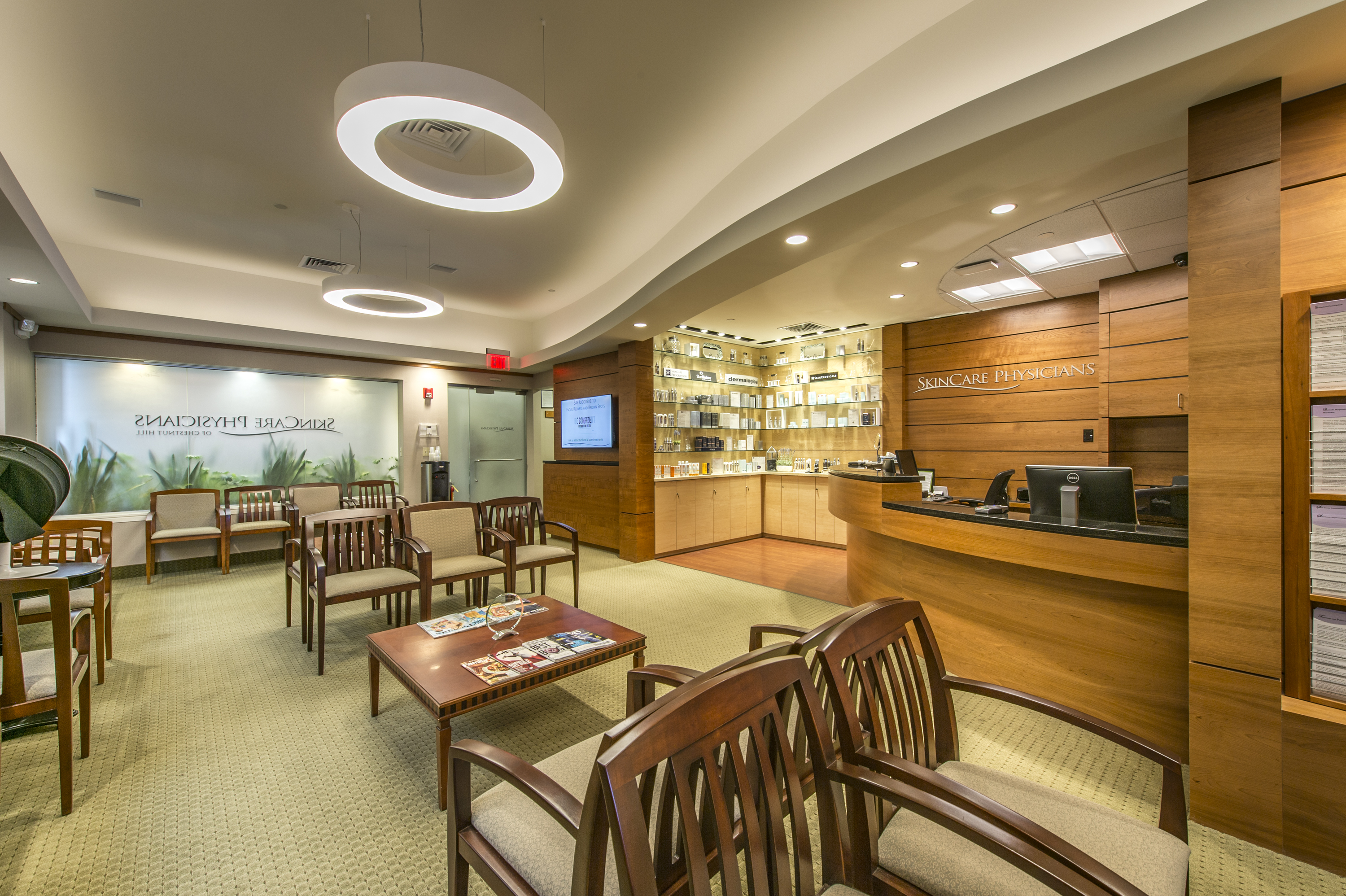Outrun the sun: Sunscreen advice for marathoners and mere mortals
I’ve run the Boston Marathon for the past 10 years. The afternoon before the race, I host a big carb-loading party (and fundraiser for the Melanoma Foundation of New England!) for my running friends, some of whom travel from far-flung parts of the world to run this historic race. One of my friends, Bob, is a very smart man, and he gave me, a dermatologist, a really important lesson about sunscreen among marathoners.
Bob runs a speedy (sub-3:00) race. Several years ago, the weather predictions called for clouds, and Bob was not wearing sunscreen. But these clouds unexpectedly parted at the starting gun, and the race was run under sunny skies. As speedy as Bob is, he could not outrun the sun that day.
Many marathoners write their name on their arms in dark, Sharpie markers, so that the spectators can cheer them on by name. When Bob washed off his markings after the race, the contrast of the sun-protected, “markered” areas against the newly sunburned areas was startling. What was even more startling is that a full year later, when Bob returned to my party (and the race!) his arm still clearly showed evidence of the sun damage. His name could be clearly read on his arm:

Sunburn on marathon’s day

Sun damage still visible a year later
At my party 2 years later, the top of the “O” in Bob’s name was barely visible. But you have to worry about the invisible damage that even a single episode of sunburn can cause. Bob is a convert to careful sun protection now, but a certain amount of damage has been done.
A few years later, I saw the same evidence of sun damage in a young woman who was a triathlete. Triathletes write their race numbers on their arms so that it does not wash off as they transition from swimming to cycling to running events. And this athlete’s race number (164) was still visible over 1 year after her sunburn during a race!

Triathlete skin sun damage a year later
I coach the Melanoma Foundation of New England’s Boston Marathon team. Our athletes often have a personal connection to skin cancer that is a powerful motivator for protecting their own skin from the sun. Other runners aren’t similarly motivated. Studies have indicated that marathoners are at elevated risk for developing melanoma. This may be due to considerable UV exposure during training and competition, or possibly repeated immunosuppression due to endurance exercise. Only 56% of runners report regular use of sunscreens.
Why do endurance athletes make these sunscreen mistakes? And what can non-athletes learn from them?
Sunscreen is not part of their daily routine
Many runners have a pretty strict routine for training that includes warming up, stretching, hydrating, fueling, choosing the right shoe and picking a route and a workout for the day. Often, the decision about applying sunscreen is left until the last minute and is based on the weather.
Advice you can use: Sunscreen should be applied every day, clouds or sun, rain or shine. Making sunscreen accessible is the first step toward building a daily sunscreen habit, and I tell my patient/athletes to put a tube of sunscreen in their running shoe so that they cannot put on their shoes without reaching for the sunscreen first!
Sunscreen is not part of their planning for a race
Race checklists are daunting. Many athletes are traveling long distances for the big event. Nerves prevail and many rely on carefully prepared checklists to be certain to bring the items they will need for their event. A Google search of 25 “marathon checklists” reveals that most do recommend bringing sunscreen to the start, which is terrific. But 20% don’t mention sunscreen at all, and another 12% recommend sunscreen only if the weather requires it.
Advice you can use: Keep sunscreen on your own personal daily “checklist”, Add sunscreen application to your daily routine, rain or shine, and don’t let the weather report dictate whether you will apply sunscreen that day.
Athletes don’t like the feel of sunscreen (stings eyes)
Many athletes do not like sunscreens because the sweat drips into their eyes and it stings. This is a very real and uncomfortable concern!
Advice you can use: Baby sunscreens often do not sting the eyes, and they are an excellent alternative. Remember the other forms of sun protection available to you. Some prefer to apply sunscreen from the eyes down, so that the sunscreen doesn’t get a chance to drip down and irritate your eyes. Follow this with wraparound sunglasses: the big lenses UV-protective lenses will physically block the sun from the delicate skin around the eyes. A visor or running cap with a brim will protect the forehead. Remember that seeking shade and using physical forms of sun protection are excellent sun-protective options as well!
Athletes don’t apply enough sunscreen
I cannot tell you how often I’ve been on the Boston Marathon buses out to Hopkinton and have seen athletes applying their sunscreen insufficiently: teeny, tiny dabs rubbed over large body surface areas. They are not alone! It turns out that in studies of most of us in the real world, people apply only about ¼ to 1/3 of the amount of sunscreen needed to reach the labeled SPF value!
Advice you can use: Be generous with your sunscreen. The American Academy of Dermatology recommends using a full1 oz. of sunscreen for a full-body application. This is about the amount in a shot glass. If you are using a spray sunscreen, be sure to apply it in a wind-shielded area so that most of it doesn’t blow away!
Athletes think sunscreen makes them feel hotter
Runners often shun sunscreen because they worry that it will make them feel hotter, sweat more, and degrade their athletic performance. It turns out that studies among endurance cyclists reveal that an SPF 15 sunscreen did not affect any performance or heat-regulation variables, including skin temperature.
Advice you can use: apply your sunscreen before you leave the house, while you are still cool. Letting the sunscreen dry on your skin will help you avoid that sticky feeling as the weather heats up! Some of the spray sunscreens offer a cooling effect on the skin, which may be a great choice for reapplication on a hot day!
Athletes don’t know the risks
As mentioned previously, endurance athletes are at increased risk of skin cancer, but many are unaware of their risks and aren’t motivated to protect themselves. Melanoma, the most deadly form of skin cancer, is increasing at a faster rate than any other cancer. It is the most common cause of cancer in people aged 25-29 years old.
Advice you can use: know your risks and how to lower them. Follow the advice above to improve your daily sun protection. Check your skin monthly for any changes that might indicate the presence of a skin cancer. The American Academy of Dermatology offers an excellent resource to teach you how to do this quick scan. See your dermatologist yearly for a head-to-toe skin exam!




Leave a Reply